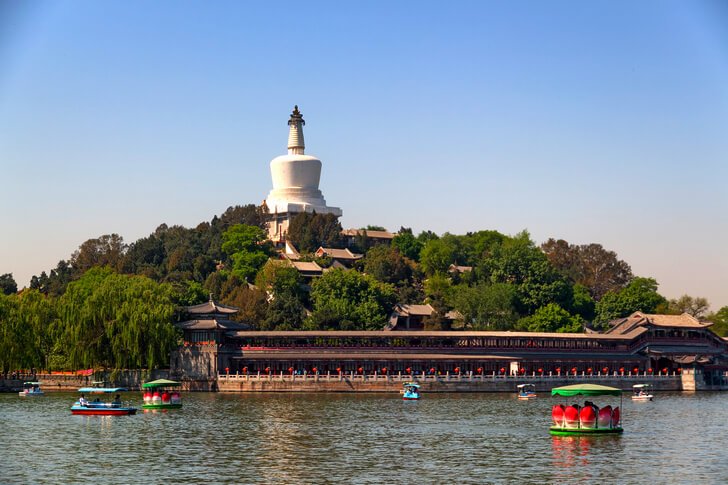Imperial heritage, the memory of the creators of the revolution and modern trends in architecture - this is the current Beijing. The Forbidden City is within arm's reach of the mausoleum of Mao Zedong and the "egg" - an opera house built in a futuristic style. By some miracle, local authorities find a place to build skyscrapers and parks. And they do this while preserving hutongs - old alleys and classic Chinese buildings.
Crowded Beijing is always noisy, so planning a relaxing holiday when visiting this city is pointless. However, on weekdays, you can enjoy relative silence in the temple complexes or in the bosom of nature. For a metropolis, there are quite a lot of green areas, and they are vast in area.
What to see and where to go in Beijing?
The most interesting and beautiful places for walking. Photos and a short description.
- Forbidden city
- The great Wall of China
- Ming Dynasty Tombs
- Temple of Heaven (Tiantan)
- Summer Palace (Yiheyuan)
- Changlan Gallery
- Tiananmen Square
- Gate of Heavenly Peace
- Mausoleum of Mao Zedong
- Yonghegun Temple
- Temple of Confucius
- National Museum of China
- National Center for the Performing Arts
- Capital Museum
- 798 Art Zone
- Chaoyang Theater
- Red theater
- Olympic Park
- Wangfujing street
- Nanluogu hutong
- CCTV Headquarters
- Skyscrapers Wangjing SOHO
- Peace Park
- Amusement park Valley of Happiness
- Houhai lake
- Beijing zoo
- Yuanmingyuan
- Beijing botanical garden
- Jingshan Park
- Beihai Park
forbidden city
The palace complex has an area of 720 thousand m² and includes 980 buildings. According to these indicators, he has no equal in the world. It was the main residence for 24 emperors of the Ming and Qing dynasties for almost 500 years. After the abdication of Pu Yi from the throne and the revolution, the Forbidden City in 1925 became a museum where the treasures of the imperial houses are kept. The first of the Chinese sites included in the UNESCO World Heritage List.

The great Wall of China
The main Chinese attraction, which, according to legend, is visible from space. It began to be built in the 3rd century BC. It was of great defensive importance. The thickness of the walls varies from 5 to 8 meters, and the height - from 6 to 10 meters. It was constantly completed until the middle of the 17th century. The current length is more than 21 thousand km. Badaling is the most visited site by tourists. It passes near Beijing.
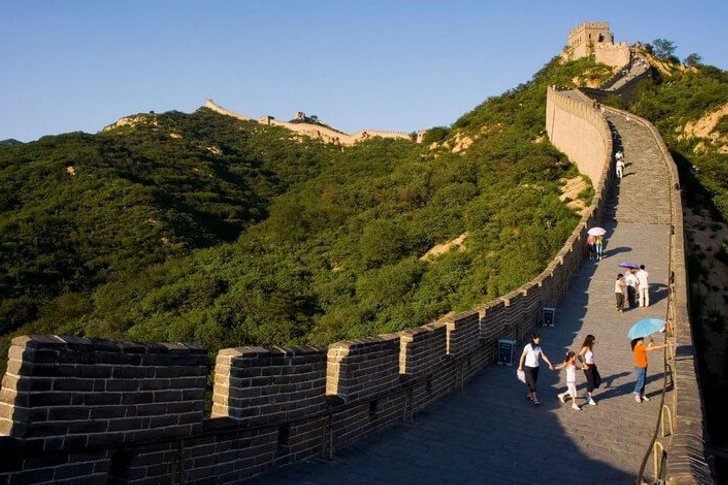
Ming Dynasty Tombs
The complex of mausoleums is located on the slopes of the Tianshou Mountains. 13 emperors of the Ming Dynasty, starting with Zhu Di, rested here. Together with the tombs of the Qing Dynasty, it is included in the list of UNESCO World Heritage Sites. The road to the mausoleums is decorated with statues of animals and mythical creatures. The place was chosen for burial by Zhu Di himself, who moved the country's capital to Beijing. During the construction, they adhered to the principles of Feng Shui.
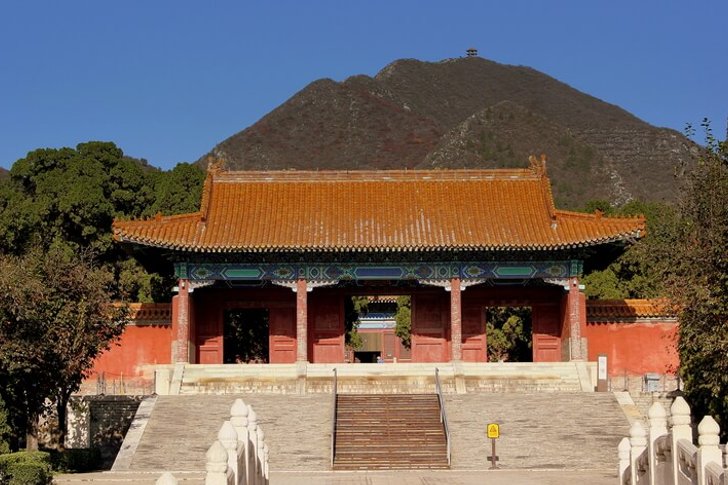
Temple of Heaven (Tiantan)
Built in 1420 and located in a park area. The rounded features of the temple building are not typical for China. It is believed that this is how the authors of the project tried to symbolize the sky. On the day of the winter solstice, the emperor himself prayed for the harvest here. The tradition lasted for several centuries. Now the temple and monastery complex is one of the largest in the country. Its area is about 280 hectares.

Summer Palace (Yiheyuan)
This is both the emperor's residence and a park area. Construction was carried out in the middle of the XVIII century. The architectural ensemble is located at the eastern gate. And on the Mountain of Longevity rises the Tower of Incense, which was erected in honor of the Buddha. The complex of canals, pavilions, a painted gallery, artificial lakes and islands is a masterpiece of Chinese landscape design. Since 1998 it has been included in the UNESCO World Heritage List.
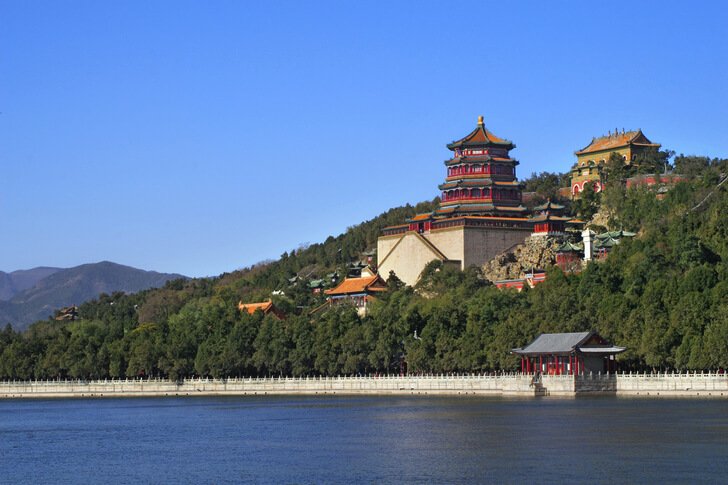
Changlan Gallery
It is located on the territory of the Summer Palace and connects its separate parts. Erected in 1750, it was almost completely destroyed a century later, but restored. The peculiarity of this covered passage is 273 sections, which, among other things, contain images of battle scenes and landscapes. The total number of stories is about 14 thousand. Listed in the Guinness Book of Records.
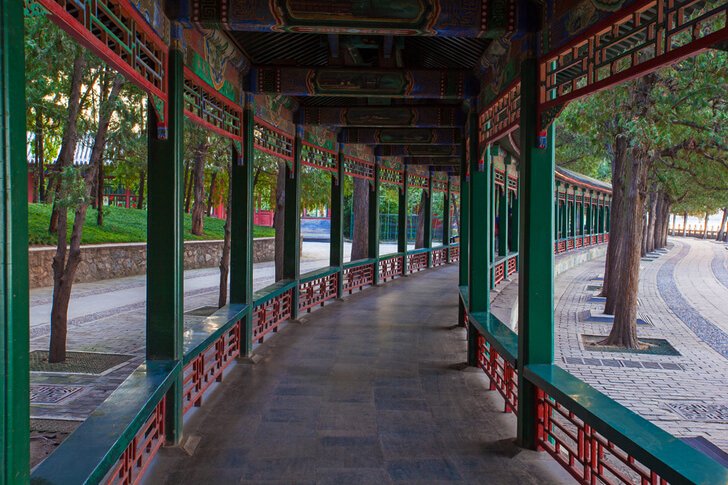
Tiananmen Square
Beijing's central square was the largest until the 20th century. Spread over 440 thousand m². Here Mao Zedong proclaimed the formation of the People's Republic of China. It is also known for sad events, for example, the group self-immolation in 2001, or the suppression of protests in 1989. Attractions: Mao Zedong Mausoleum, Monument to the People's Heroes, Gate of Heavenly Peace, National Performing Arts Center.
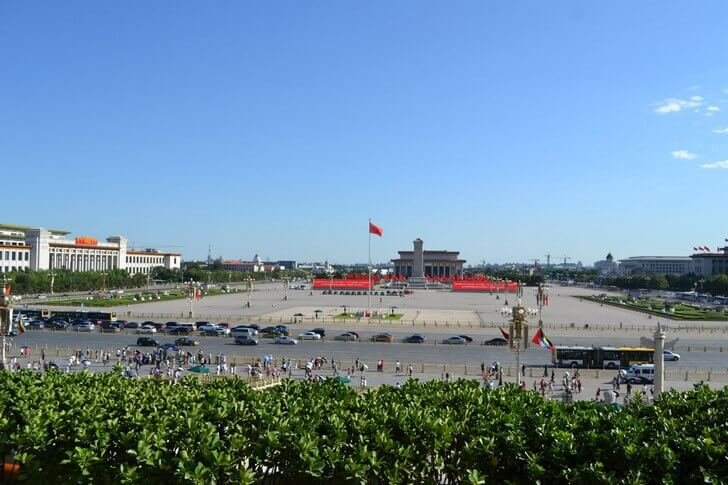
Gate of Heavenly Peace
The main entrance to the Imperial City. Built in 1420, they were damaged several times, including by a lightning strike, and restored. Around them, in the past, decrees of the emperor were read. The ruler of the Middle Kingdom himself went through the gates to pray and leave the sacrifices. In the 20th century, a portrait of Mao Zedong was hung over the gate, and on the sides were two posters with slogans and wishes for the Chinese people.
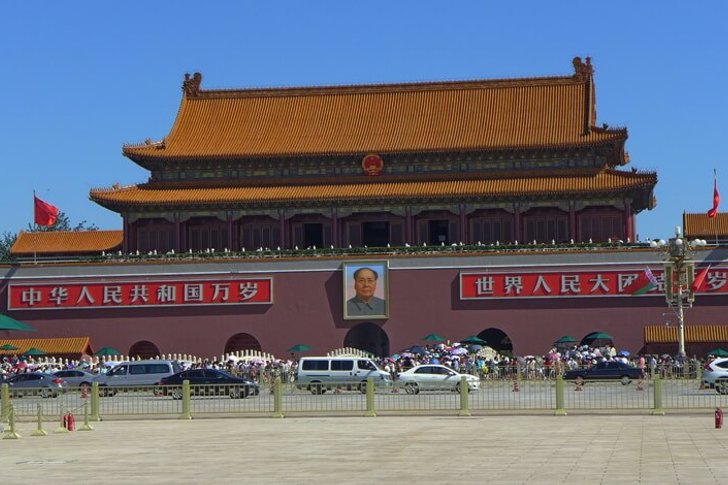
Mausoleum of Mao Zedong
Built by 1977 on Tiananmen Square. The coffin with the remains of the long-term leader of the Communist Party of China and the country of Mao Zedong is installed in the Hall of Visitors. The Hall of Revolutionary Achievement tells about the politician and his associates during the coup. There is a marble statue of Mao in the North Hall, and images of Chinese sights are collected in the South Hall. There is a cinema in the building.
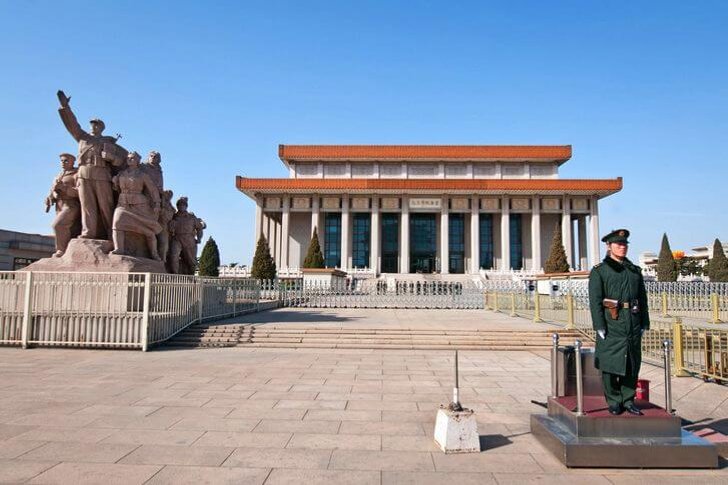
Yonghegun Temple
Refers to the denomination of Tibetan Buddhism. During construction in 1964, it was decided to combine Chinese and Tibetan classical styles. In the central hall there are 3 statues of Buddha, identifying the past, present and future. The main ceremonies are held in the Dharmachakra hall. And the “Pavilion of 10,000 Lucks” is notable for the statue of Maitreya, which has a height of 26 meters and is carved from sandalwood.

Temple of Confucius
It is dated 1302, and has existed as a museum since 1911. The second largest Confucian temple of the Celestial Empire. The area of the complex, divided into 4 yards, is more than 20 thousand m². Here, the names of 50 thousand people who passed the exam on the works of Confucius are engraved on stone tablets. And 189 steles are covered with quotes of the philosopher. The main museum exposition is located in the pavilion of the Great Learning.
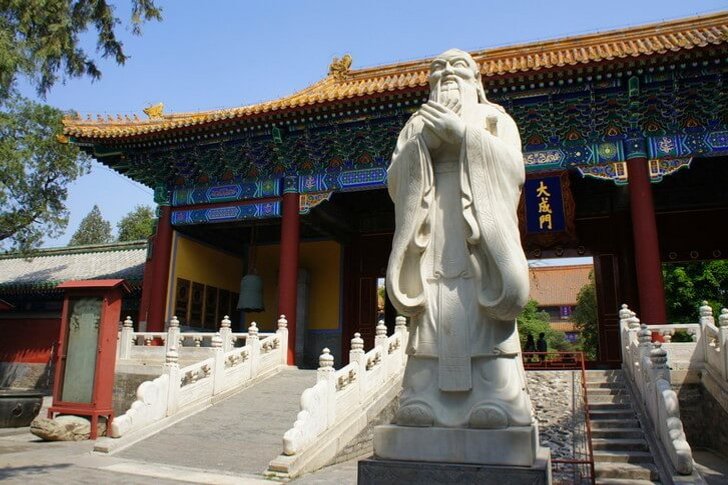
National Museum of China
In its current form, it appeared in 2003 after the merger of the National Museum of Chinese History and the Museum of the Chinese Revolution. Both were founded in 1959 and were in the same building. From 2007 to 2011 the museum was closed due to reconstruction. The exhibition space was increased 3 times, and the exposition was updated. The collections cover a period of 5 thousand years. A countdown clock is installed on the facade before important events.

National Center for the Performing Arts
The futuristic building was built in the Chinese capital from 2001 to 2007. Paul Andreu was responsible for the project. Even after the start of work, disputes continued about their expediency. The ellipsoidal dome made of titanium and glass clearly did not fit into the historic center of the city. The people called the opera house the "egg" precisely because of its unusual shape. An artificial reservoir was created around the center. Inside - 3 halls for 6500 seats.
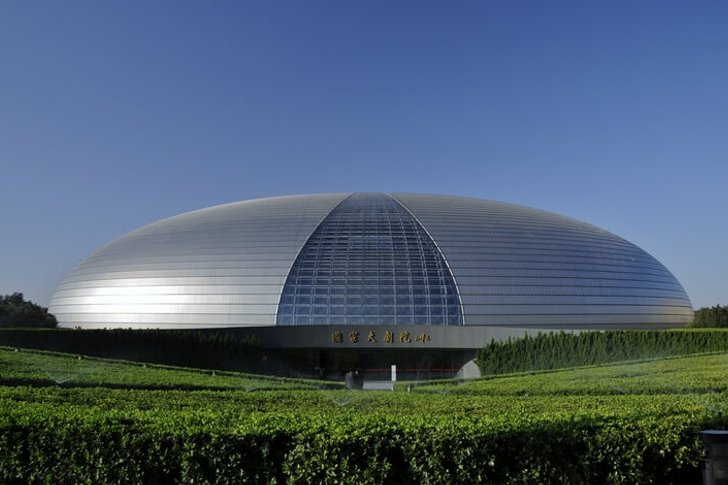
Capital Museum
According to the classification, it can be attributed to local lore. By 1981, a modern building in the Art Nouveau style was built specifically for the museum. The combination of glass and concrete makes it both fundamental and light. On 7 floors there are several permanent exhibitions about the past of China. Temporary exhibitions cover the contemporary period of history. The funds include 200 thousand units of storage.

798 Art Zone
In the 1950s, a factory was built on this territory. By the 90s, it no longer worked at full capacity, and the areas were rented out. The Beijing Academy of Fine Arts rented several rooms, then individual artists began to catch up. They opened workshops, galleries or simply lived here. Gradually, the Arts Zone filled up with restaurants, theme shops, souvenir shops and exhibition halls.

Chaoyang Theater
Founded in 1984. The main specialization is the creation of acrobatic shows. In addition to the performance hall, there are three cinema halls on an area of 3,000 m². The program is shown twice a day. When staging, the artists try to take into account Chinese traditions, use authentic props or appropriate music. Numbers combine beauty, dexterity, grace and some risk.
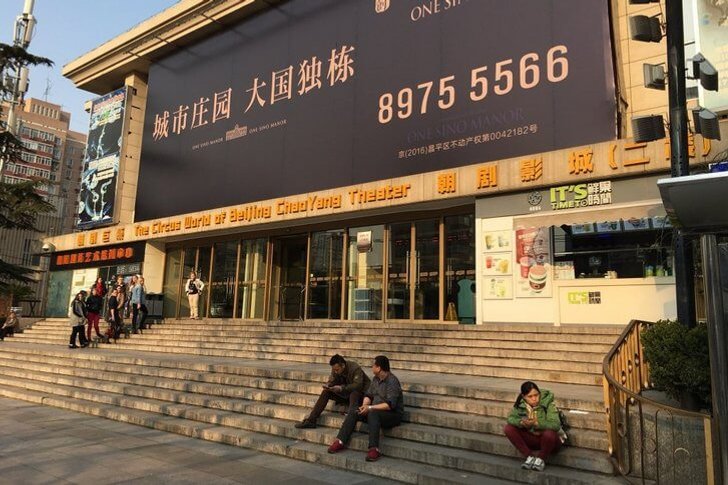
Red theater
The name is derived from the color of the walls of the building, located in the historical district of the capital of the Celestial Empire. Performances include acrobatic performances with elements of kung fu. The artists do not use insurance, which makes the spectacle even more exciting. On the screens, the Chinese words spoken from the stage are dubbed into English translations. During the performance, filming in the hall is prohibited.
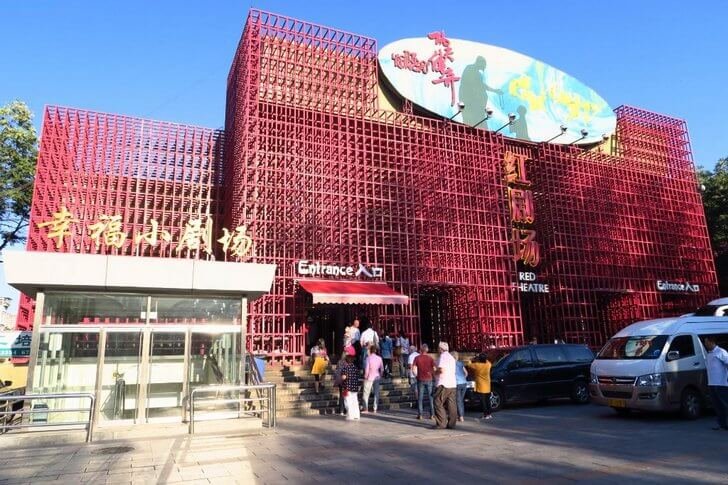
Olympic Park
Built over several years for the 2008 Olympic Games. Area - 1135 hectares. The main objects of the park are the stadium "Bird's Nest" and the palace for water sports "Water Cube". When the competition ended, they were converted into an entertainment complex and a music and variety center, respectively. In addition, the park has a vast green area and attractions, such as the Ferris Wheel.

Wangfujing street
One of the trade arteries of the capital of China. Almost entirely pedestrian. The length is less than a kilometer, while there are about 200 stores on it. In addition to famous brands, Wongfujing also has locally produced goods, including handmade ones. The street dates back to the Yuan Dynasty, when it was formed 700 years ago. It received its current name 200 years later during the Ming Dynasty.
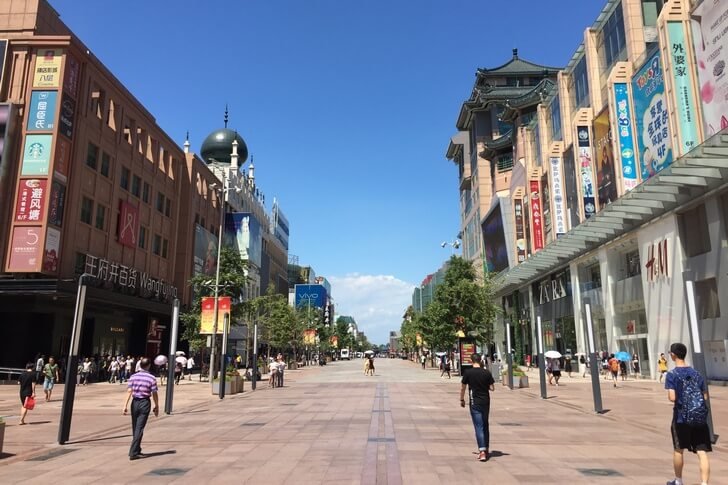
Nanluogu hutong
The narrow street with this name is a typical representative of hutong - old lanes. It stretches for 800 meters in the Dongcheng area. It was built during the Yuan Dynasty, and received its current name during the Qing Dynasty. It has not been rebuilt for centuries, but the buildings often changed their specialization. Now more and more locals are guided by tourists, so they open shops and small restaurants.
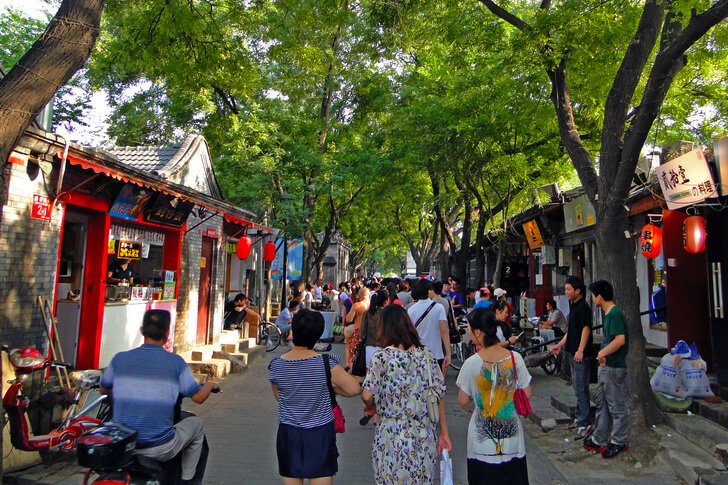
CCTV Headquarters
The construction of the skyscraper lasted from 2004 to 2009. The building is reserved for the headquarters of the Chinese Central Television. In addition, there are offices, exhibition halls, a hotel, a theater and a cultural center inside. The shape of the skyscraper is unusual: two towers slightly inclined towards each other are connected by a common platform at the bottom and a 75-meter walkway at the top. Height - 234 meters.
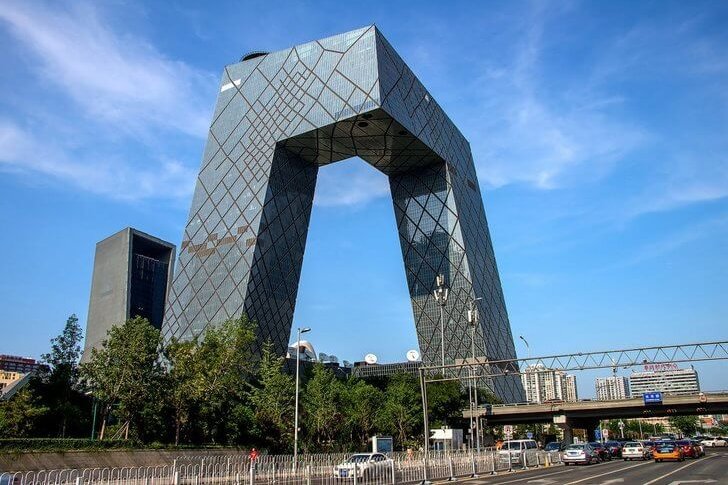
Skyscrapers Wangjing SOHO
When the city needed office buildings for representatives of international companies, it was decided to build skyscrapers in the Wangjing area. The three buildings, which look like mountains, were designed by Zaha Khalid in 2012. In their external design there are no sharp corners, only smooth lines. The water supply system of skyscrapers is also noteworthy, which allows saving up to 42% of water from the generally accepted norm.
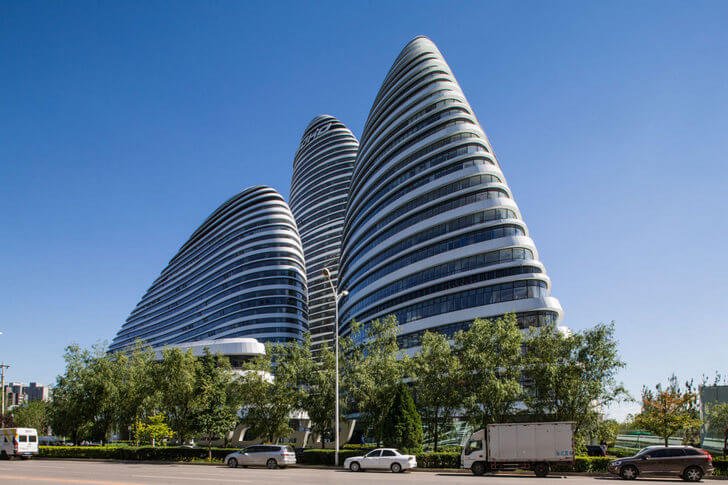
Peace Park
On the territory of several hectares, copies of the main attractions of the world are collected. In addition to the beauties that still exist to this day, such as the Eiffel Tower, the Sydney Opera House, the Grand Canyon and Notre Dame Cathedral, there is also the Trojan Horse that came from the myths, as well as the lost Lighthouse of Alexandria. Most of the objects are made on a scale of 1:8. The park is a place for holding national holidays of different peoples.
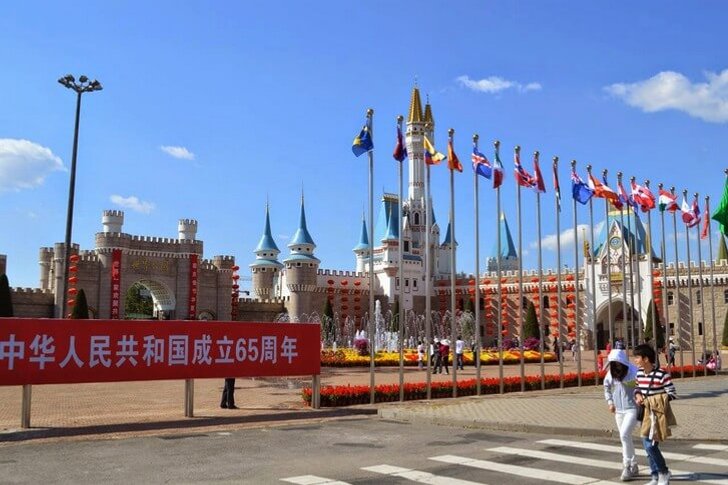
Amusement park "Valley of Happiness"
It became an alternative to Disneyland and began to receive visitors since 2006. The area is 500 thousand m². It is divided into 6 thematic zones, each of which has its own theme and corresponding appearance. Ancient Greece, Maya, Wild World, Atlantis, Ant Country, Fairy Kingdom include about a hundred attractions. In addition, the park has cafes, shops, places for recreation.
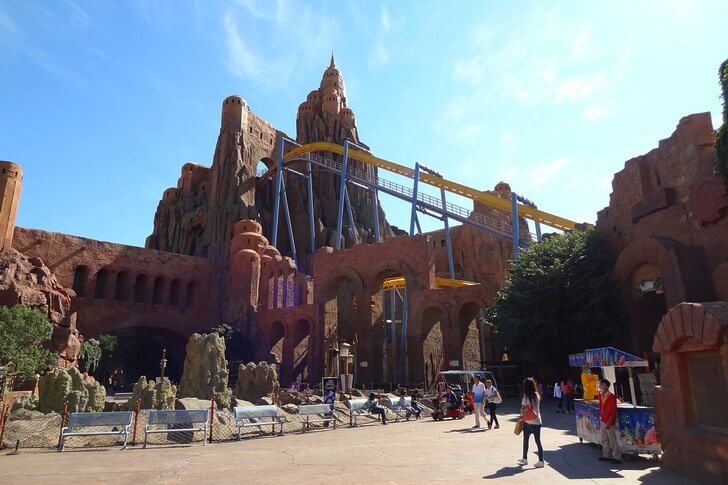
Houhai lake
Through channels it is connected to the Xihai and Qianhai lakes. There are restaurants on the shores serving dishes from different cuisines of the world. Thanks to them, the district is famous for its nightlife. You can book a boat trip around Houhai on a small boat decorated in Chinese style. A wide stone bridge is thrown across the lake. There are many attractions nearby, such as the race track or Gongwangfu Palace.

beijing zoo
The first name is “Garden of 10 thousand animals”. Founded in 1908. After almost half a century, the time has come for big changes: many new species have been introduced. Spacious enclosures for monkeys, pandas, lions, elephants and other fauna have been built on an area of 50,000 m². Currently, the zoo has about 7 thousand pets. Some buildings are also part of the exposition and have their own architectural features.
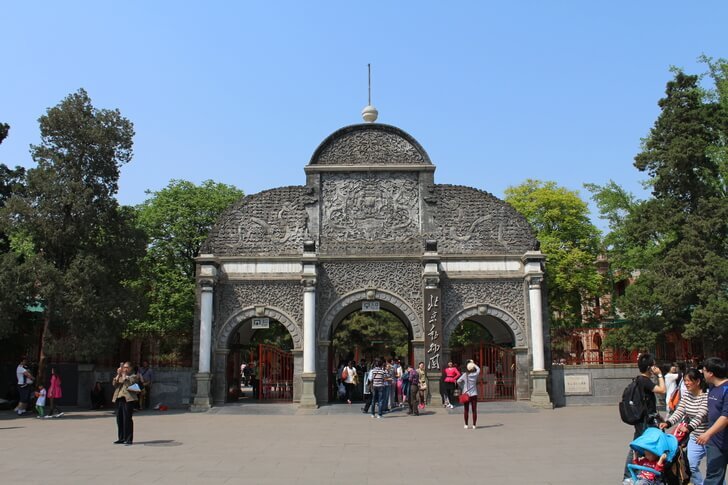
Yuanmingyuan
The garden and palace complex was founded in 1707. It included palaces, religious buildings, artificial reservoirs. It was destroyed in the middle of the 19th century. It has not been restored, but some details of the landscape are well drawn to this day. Even the ruins of a European-style palace look neat and picturesque. We visit tourists on a par with other beauties of the city.
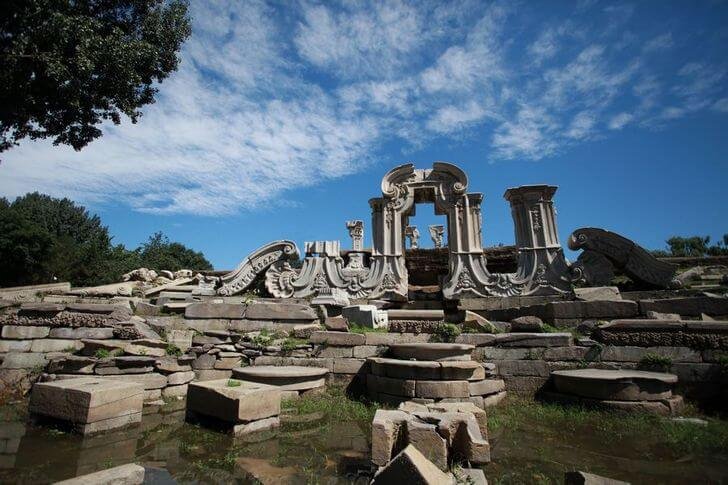
beijing botanical garden
The territory is mixed - mountain-flat. The area is about 130 hectares. The garden is divided into zones: places for experiments, tourist segments and those where access is limited. Plants - about 3 thousand species. The bonsai garden boasts trees that are over a thousand years old. And 60 varieties of peach trees have been collected. There are cafes and restaurants in the garden, as well as paths with detailed signs for the convenience of tourists.
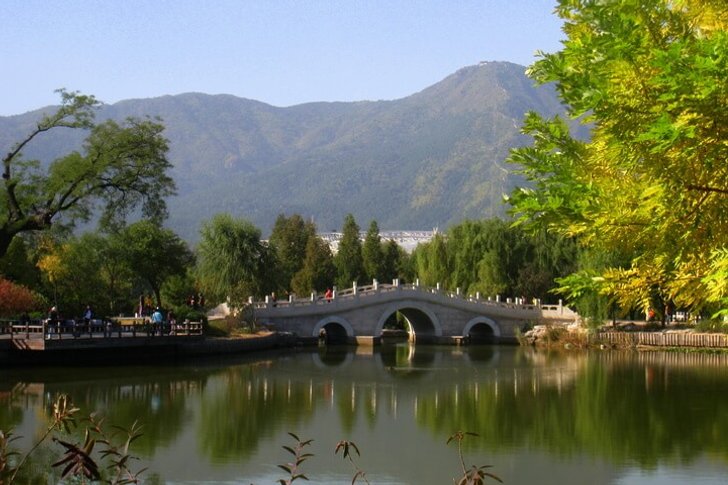
Jingshan Park
The name translates as "landscape mountain park" or "view from the mountain." It was founded as an imperial garden. For this, a hill over 47 meters high was artificially created. Nearby are 4 smaller hills. Each has a classical Chinese pavilion. Jingshan is a gathering place for the elderly. They are engaged in dancing, meditation practices and group walks in the park.
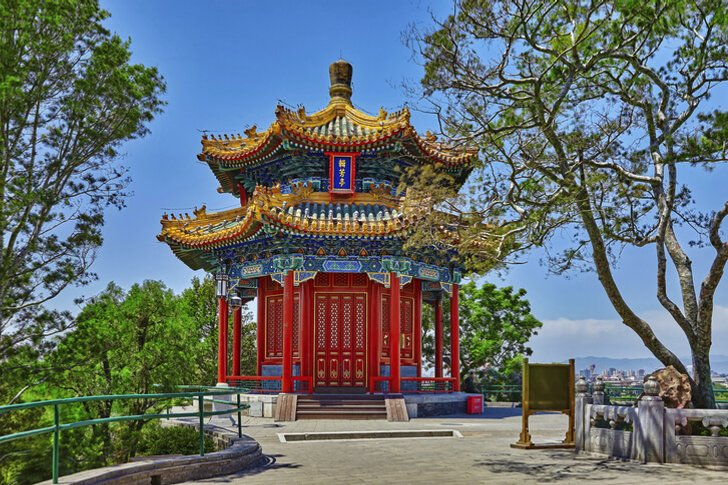
Beihai Park
Located next to the Forbidden City. The area is about 69 hectares. The lake of the same name occupies about half of the territory. The park has a long history dating back to the 10th century, but it was not until 1925 that the general public was allowed in. There are many iconic objects here, for example: the 40-meter Bai Ta Stupa, the Yunan Buddhist Temple, the 5 Dragon Pavilion, the Taihu stones and the "garden in the garden" called Jingxin Hall.
